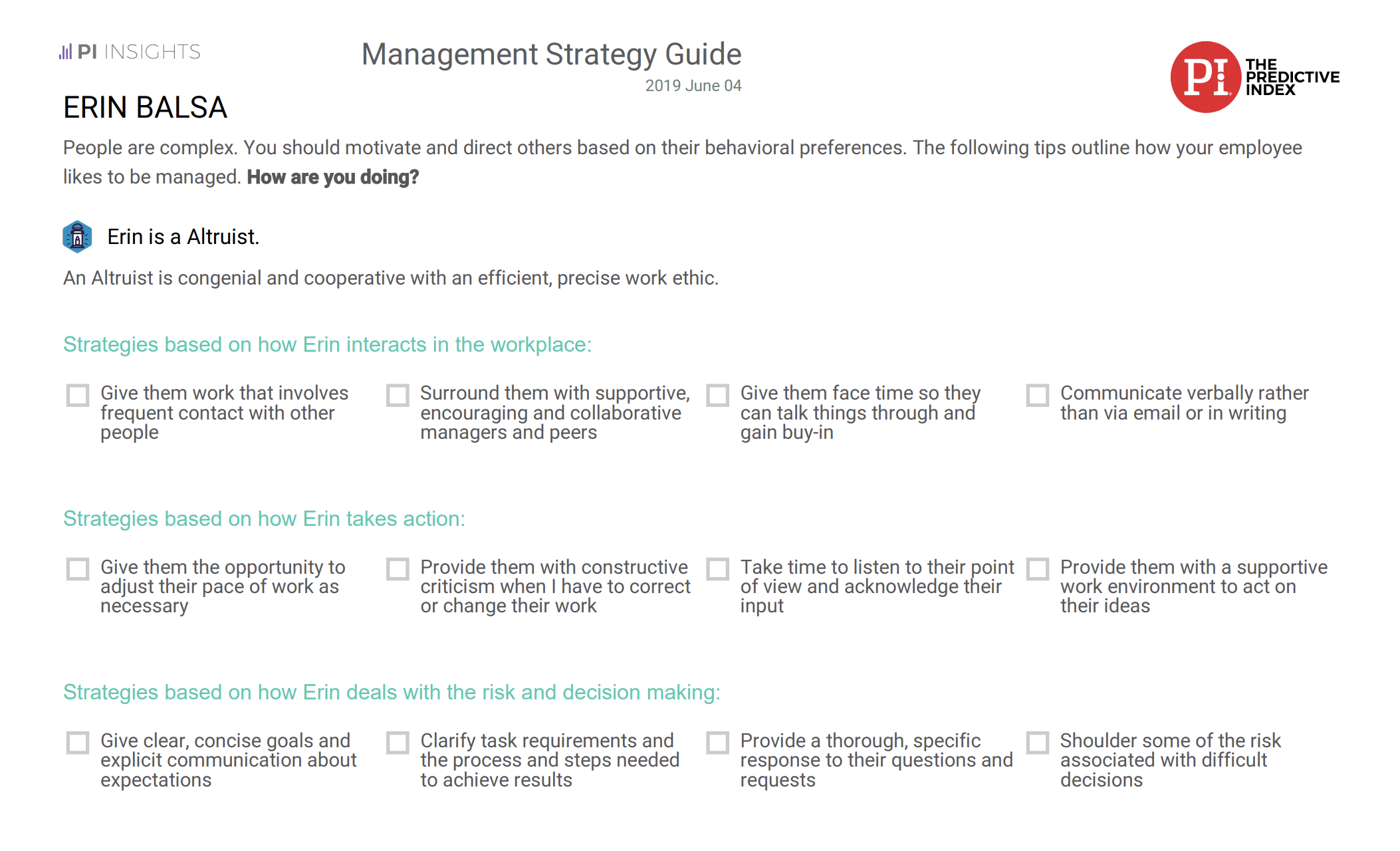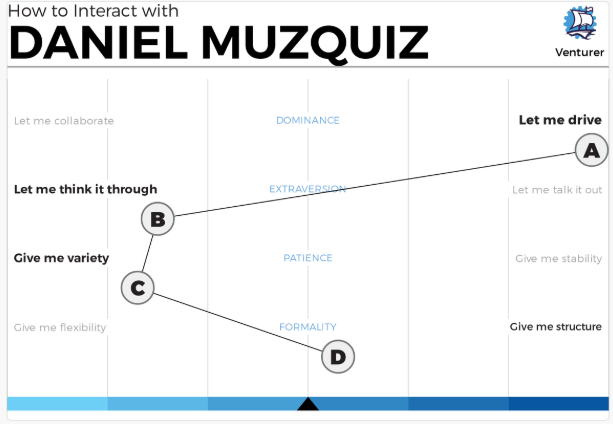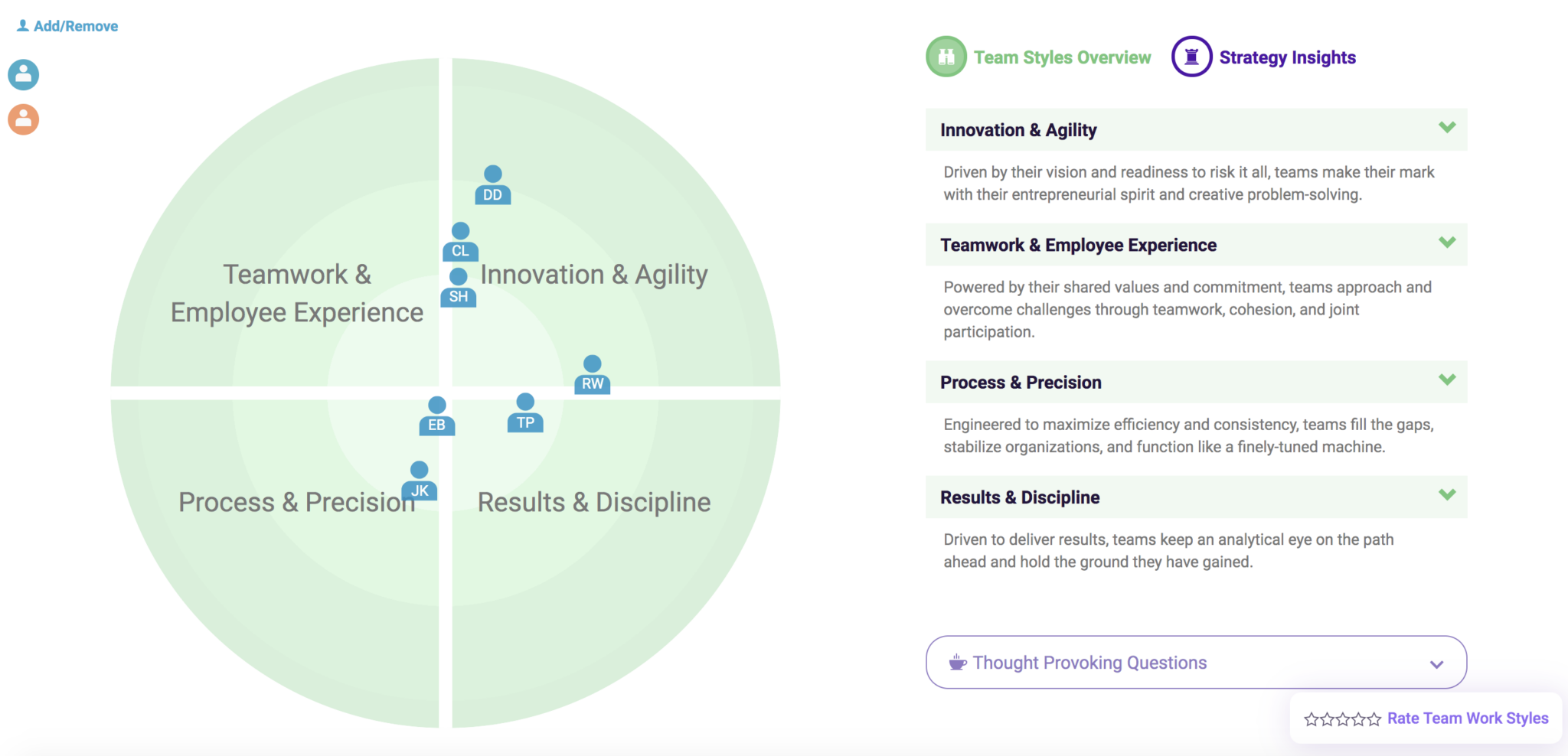Leaders who know how to motivate employees are more likely to meet their KPIs.
In 2014, Mike Zani and Daniel Muzquiz bought The Predictive Index®. The pair set out with a goal to scale the 60-year-old family-run business. Transforming a company—and motivating an entire workforce to support a new growth strategy—is a monumental task.
But Zani and Muzquiz had a secret weapon: talent optimization.
Talent optimization is a step-by-step discipline leaders can follow to create a talent strategy that’s in sync with their company’s business strategy.
When you align your employees with your company goals, magic happens—and motivating your employees becomes simpler than you ever imagined.
Top 8 ways to motivate employees with talent optimization
Zani and Muzquiz hadn’t yet created the talent optimization discipline in 2014. (They shared it with the world in early 2019 after using this pitch deck to raise $50M in growth-stage capital from General Catalyst.) But they were doing talent optimization at PI intuitively back then—with great results.

Here’s how you can use the discipline to create an environment that fuels employee motivation:
1. Take a look at your organizational structure—and change it if you need to.
You might be thinking, what does my organizational structure have to do with motivating my employees? As it turns out, a lot.
The way you structure your company can enable or inhibit workers’ ability to accomplish goals.
When the organizational structure acts as a barrier to success, employees will feel like they’ve been set up to fail and might adopt a “why bother?” mindset.
But with the right structure in place, employees feel like they’ve been set up to succeed—and that can be motivating in and of itself.
How do you choose the right organizational structure to motivate employees?
The right organizational structure is one that matches your strategic goals. As PI’s focus was growing, Zani and Muzquiz selected a flat organizational structure with few middle managers to enable rapid decision making. (The fewer people who need to sign off, the faster you can go.)
But if your company plays in a highly-regulated space, you might need a more hierarchical design with layers of management to slow things down to maintain compliance.
Look at org structure from the employee’s perspective: Imagine working at a company with a growth strategy that’s focused on bringing new products to market quickly—but that has a hierarchical structure in place. You’d be working every day to innovate, but you’d be slowed down every step of the way. That’s a recipe for disengagement.
70% of People Say that HR is an Essential Piece of the Leadership Puzzle
Our State of Talent Optimization Report will help you put that puzzle together and become the leader you need to be
2. Communicate a vision employees can get behind.
A top driver of employee engagement is senior leadership’s ability to communicate a vision of the future that’s motivating. Have you communicated a vision of your company’s future that motivates your employees?
This step is especially important for start-ups, as most fail due to reasons like no market need, ran out of cash, and not the right team. With the odds stacked against you, you’ll have a hard time motivating your talent to go above and beyond if you can’t paint a picture of prosperity.
Zani and Muzquiz started painting that picture in their “day one deck,” the presentation they gave to introduce themselves and the big plans they had for the business. They had a clear vision for PI’s future, they had a plan to get there, and they communicated both to all employees from the get-go.
Today, the two continue to communicate their vision regularly, keeping employees dialed in and amped up about making that future a reality.
Want to see what it looks like when your vision motivates your employees?
A few weeks ago, PI employees were encouraged to participate in a “LinkedIn takeover” by posting a video of themselves explaining talent optimization. There was no pressure, just a simple ask: “We’d love it if you’d post a video to LinkedIn on April 16.”
About 50% of our employees posted a video that day—including several people who dislike being on camera (myself included). Helping the company reach its goals was more important than our own temporary discomfort.
Here are a few of the videos posted that day:
3. Evaluate and ensure your leadership team fit.
Do you have the right senior leaders in place? Just as different business strategies require certain organizational structures, different strategies require certain leadership abilities.
A company that wishes to increase quality will need executives who can design systems and processes. In terms of behavioral drives, they should look for leaders with high patience, as those individuals are process-oriented, and high formality, as those individuals are all about rules and structure.
To measure behavioral drives, administer the PI Behavioral Assessment™. Once you know each executive’s motivating drives and needs, you can pinpoint gaps and create a plan for addressing them (e.g., adding a new member to the executive team or helping individuals stretch and grow).
Why is ensuring leadership team fit important in terms of motivating employees?
Another top driver of employee engagement is trust in senior leadership—and that extends to trust in executives’ ability to make intelligent decisions that are in everyone’s best interest. If a company’s strategy is to innovate, it needs captains at its helm who aren’t afraid of taking risks. An executive team full of risk-averse individuals might crash the ship by playing it too safe.
Zani and Muzquiz knew they were behaviorally wired to execute the PI business strategy. (Zani is a Persuader and Muzquiz is a Venturer; both are fast-moving big-picture thinkers who drive change.)

But they couldn’t fill the senior team with cookie-cutter versions of themselves. An executive team of solely risk-taking innovators could drive the car off the cliff.
To create balance, the duo added leaders like CFO John McGuinness, a Strategist. McGuiness moves fast and is a big-picture thinker like Zani and Muzquiz. But because of his high formality, he brings something extra to the table: He’s a calculated risk-taker who’s organized and thorough—exactly the type of person you want heading up finance at a high-growth company.
Want your employees to work harder? Put the right senior leaders in place.
4. Establish—and reinforce—your culture.
Culture is a lever leaders can pull to drive performance. That’s why establishing a company culture whose core values align with your business strategy is one of the most important activities you can do.
To establish your culture, choose cultural factors and values that map to your strategy. For example, if you’re an organization in a regulated environment, foster a culture that values critical thinking, risk management, and following standard operating procedures.
Zani and Muzquiz chose values and behaviors they wanted employees to embody (creating the acronym THREADS):
- Teamwork
- Honesty
- Reliability
- Energy
- Action
- Drive
- Scope
With core values decided and packaged memorably as “These are the THREADS that bind us,” they drafted descriptions for each.
They described Action as “Errors of action are better than errors of inaction.” This told employees in no uncertain terms they shouldn’t be afraid to fail. A “fail fast” culture is in line with the risk-taking mindset that’s required for innovation and growth. They intentionally created a work environment that was a springboard for executing strategic objectives.

Today our senior leadership team reinforces the PI culture in various ways:
- They reward employees for exhibiting THREADS through shout-outs, profit sharing, and promotions.
- They model a shared language that trickles down. (It’s not unusual to hear someone say about Scope, “Don’t boil the ocean!”)
- Even the books we read in our workplace book club speak to our strategy and values.
Our culture is everywhere, and we’re so much stronger because of it.
5. Base hiring decisions on people data.
We talked about using behavioral assessments to determine senior leaders’ motivating drives and needs. You can administer the PI Behavioral Assessment to determine employee job fit too.
What does behavioral job fit have to do with motivating employees?
Asking a person to do a job they’re not behaviorally wired to do is like asking them to write with their non-dominant hand for 40 hours per week. They might be able to do it, but it wouldn’t feel good—and they wouldn’t be motivated to go above and beyond the minimum requirements.
On the other hand, when an employee is a behavioral match for their job, doing it every day energizes them. It’s a natural source of motivation. Ensuring job fit leads to increased productivity.
The other piece of the hiring puzzle is ensuring employee cognitive fit. That’s because cognitive ability is the number one predictor of on-the-job success. The PI Cognitive Assessment™ is a critical hiring tool.
Use the PI platform to set a Job Target™ for each open role to outline the needed behavioral drives and cognitive ability. Then send both assessments to candidates with the push of a button. Our platform ranks candidates based on job fit, forming your interview shortlist.
Zani and Daniel were PI clients before they bought the company, so they had witnessed the power of hiring analytics firsthand. To this day, we still set Job Targets for every role—even employee referrals. Do we ever hire outside the target? While we’ll sometimes compromise on behavioral fit, we never compromise on cognitive.
6. Understand what makes your employees tick—and use it to motivate them.
If you’re assessing employees as part of the hiring process, you have a treasure trove of data insights at your fingertips. At a glance, you can see how to best motivate an individual based on their behavioral preferences. Give all managers access to the PI platform so they can tailor their coaching and development accordingly.
I’m an Altruist. My manager can access the PI Management Strategy Guide for guidance on how I like to be managed. Here’s a look:

If you manage people in the way they like to be managed, you’re going to have a much easier time motivating them.
7. Encourage employees to understand what makes them tick.
The more you can help employees gain self-awareness, the better. Self-awareness is required for positive working relationships throughout the company.
Developing self-awareness among individual contributors is a form of leadership development. The best leaders understand their strengths and their blind spots, and they continuously work to develop those strengths and minimize any weaknesses.
As people become more self-aware and competent, they gain confidence and motivation to keep the ball rolling.
Muzquiz is a perfect example of someone who understands his strengths and works to minimize his blind spots. He has extremely high dominance (about as high as it can get) and low extraversion, which means he’s predisposed to be matter-of-fact in his interactions with others. But, if you ever get the chance to meet Muzquiz, you’ll see that he’s one of the warmest, friendliest people around. And that’s because of his self-awareness and his willingness to stretch beyond his comfort zone.

8. Predict team dynamics before adding new employees to a team.
Team dynamics matter. In fact, one of the four forces of disengagement is lack of fit between a person and their team members.
To ensure team cohesion, use your behavioral data to evaluate team fit. It doesn’t matter if you’re hiring a new employee or thinking about moving a current employee to a new team—data must be part of the process. If you assemble teams based on guesswork, you might end up with unbalanced teams that conflict and fail to meet their goals.
Here’s a look at one branch of the marketing team:

Our company is focused on innovation and growth; while we have several employees who fall squarely in the innovation quadrant, we have the balance we need because we built the team intentionally.
As our company has grown and matured, Zani and Muzquiz have created lots of new jobs. They’ve also shifted teams around to keep the structure flat so we can continue to reach our strategic goals. But nothing was done on the fly—each move was strategic and guided by data.
Some final thoughts on how to motivate employees
From selecting the right organizational structure to establishing the right culture to hiring the right people and putting them on the right teams, your business strategy is the North Star that guides every decision you make.
When you take a talent optimization approach to creating a talent strategy that supports your business strategy, you’re already motivating your employees by design. Everything else you do—e.g., giving regular feedback, investing in employee development, practicing transparency—is icing on the cake.
Join 10,000 companies solving the most complex people problems with PI.
Hire the right people, inspire their best work, design dream teams, and sustain engagement for the long haul.








